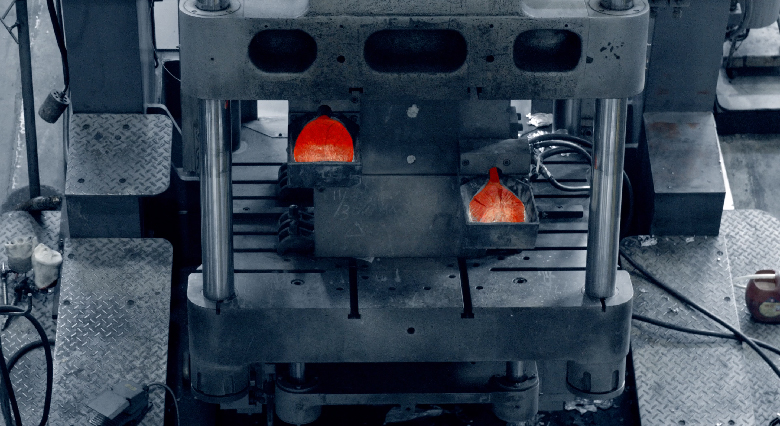
Do you provide any surface finishing service for castings?
8.1. Why do die castings need surface finishes?
Castings often require surface finishes for several reasons, including:
1. Appearance. Surface finishes are often applied to die castings to enhance their appearance, making them more aesthetically pleasing and attractive to the end-user.
2. Corrosion resistance. Castings may be exposed to harsh environments or chemicals, which can cause them to corrode and degrade over time. Surface finishes can provide a protective barrier that helps to prevent corrosion and extend the life of the casting.
3. Wear resistance. Castings may be subjected to wear and tear, particularly in applications where they are used in high-stress environments. Surface finishes can provide a protective layer that helps to prevent wear and tear and reduce the need for maintenance.
4. Functionality. Surface finishes can be used to modify the surface properties of the die casting, improving its functionality in certain applications. For example, a surface finish may be used to increase the casting's friction coefficient, making it easier to grip or handle.
8.2. What are types of surface finishes for castings?
There are several types of surface finishes available for castings, including:
1. Sandblasting. Sandblasting is a process that uses high-pressure air or water to spray sand or other abrasive particles on the surface of the casting. This process is used to remove any rough edges or burrs, and to create a uniform surface texture.
2. Shot Blasting: Shot blasting is similar to sandblasting, but instead of using sand, it uses small metal balls or shot. This process is used to create a more uniform surface texture and to remove any surface contaminants.
3. Smooth finish. A smooth surface finish is the most basic type of finish that is achieved by grinding and polishing the casting surface.
4. Tumbling: Tumbling involves placing the casting in a barrel or drum along with abrasive materials. When the barrel rotates, the abrasive materials wear away the rough edges and create a smooth surface.
5. Electroplating. Electroplating is a process that deposits a thin layer of metal onto the casting surface. This process is used to improve the casting’s corrosion resistance and to create a more attractive finish.
6. Powder coating. This process involves applying a dry powder to the casting surface, which is then heated to form a hard and durable coating. This process is used to provide a uniform color and finish to the casting and to protect it from corrosion and other forms of damage.
7. Anodizing. This process immerses the casting in an electrolyte solution and applies an electric current to it. The purpose is to create a layer of protective oxide on the casting surface. The function of the protective layer is to increase corrosion resistance and make a more attractive finish.
8.3. What is the process of die casting surface finishing?
The process of die casting surface finishing typically involves the following steps:
1. Preparation. The first step in the process is to prepare the casting for surface finishing. The preparation may include cleaning off any dirt, oil, or other contaminants from the surface and removing any burrs or rough edges that may be present.
2. Sandblasting. Sandblasting is often used as a surface preparation step in casting surface finishing. In this process, high-pressure air or water is used to blast sand or other abrasive particles onto the casting surface to remove any remaining contaminants and create a uniform surface texture.
3. Polishing. Once the surface has been prepared, it may be polished to create a smooth and shiny finish. This process may involve using a polishing wheel or other abrasive tool to buff the casting surface to creating a mirror-like finish.
4. Plating or Coating. Depending on the application and desired finish, the casting may be plated or coated with a protective layer. During this process, the finishing is done through electroplating, or powder coating.
5. Inspection. Once the finishing process is complete, the casting should be inspected to ensure that it meets the desired specifications and standards. This stage involves work such as checking for any defects or imperfections and ensuring that the surface finish is uniform and consistent.
8.4.Does Ming Ming provide surface finishing service?
Yes, we provide surface finishing service to remove possible casting defects and improve their functionality. The work gives a desired final touch to castings. Depending on the features of the casting and the material used, there is a number of surface finishes we utilize in this process, as explained in 8.2. Some castings may even require multiple steps of surface finishing to achieve a desired outcome.
We use materials and methods like powder baking paint, liquid baking paint, polishing, chrome gold, electrochemical coating, anodizing treatment, and chromic acid treatment in the surface finishing process.
Powder baking paint entails covering the dye with a thick coat of powder paint. This treatment can create a thin multiple layers over the dyes, unlike liquid paints. This material is usually baked after the process. Liquid baking paint also uses a similar process, but instead of powder paint, liquid paint is used.
Polishing reduces the friction of the casting surface. It is used to ensure the castings receive hard metal coatings like chrome gold or electrochemical coating easily.
Besides the above surface finishing approaches, anodizing treatment is used to obtain the required textures.
| Prev Back Next |
